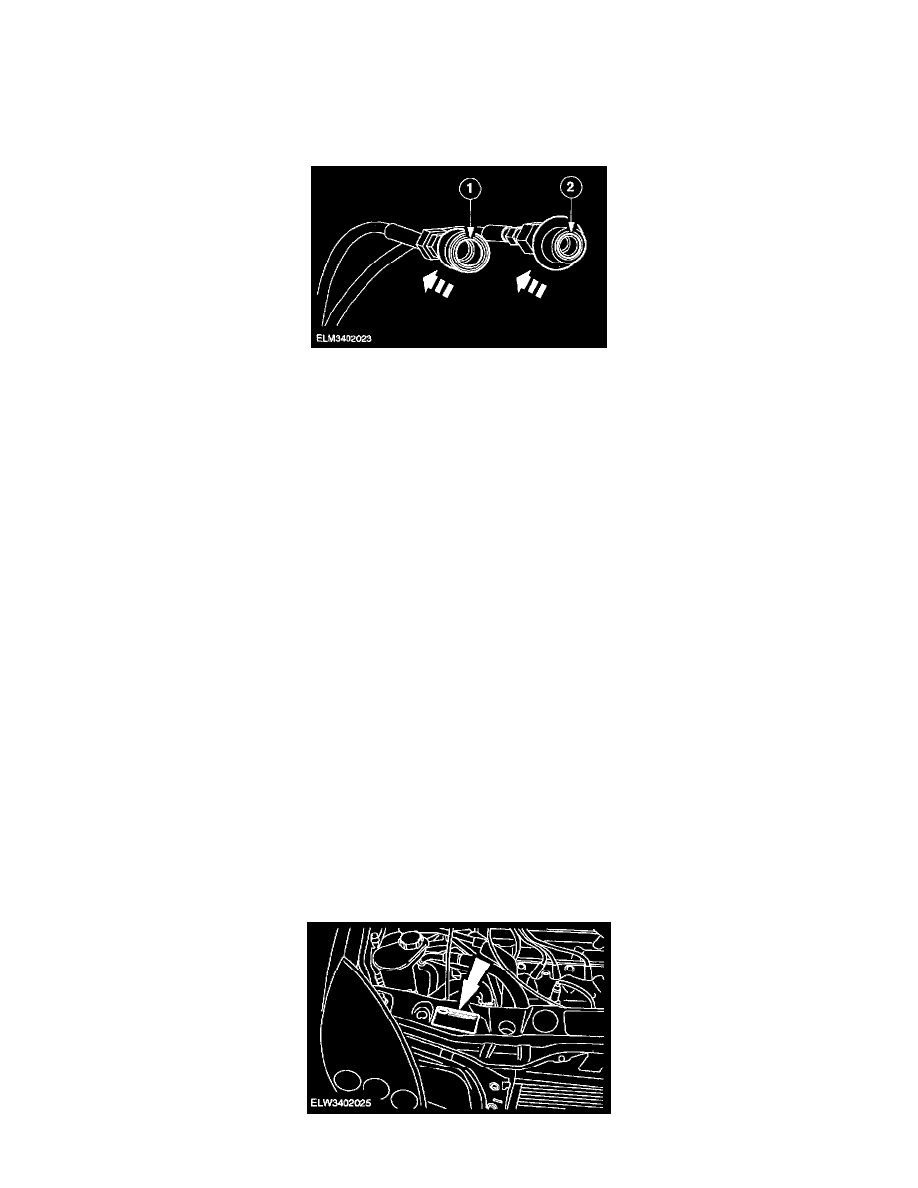Cougar V6-153 2.5L DOHC VIN L SFI (2001)

Refrigerant: Service and Repair
Evacuation and Charging
WARNING: OBSERVE HEALTH AND SAFETY PRECAUTIONS.
CAUTION: The refrigerant identifier must be used before the system is evacuated, otherwise the service station may become contaminated.
Contaminated refrigerant must be disposed of as special waste. The manufacturer's instructions must be followed when dealing with the service station.
1. Connect the service unit lines.
-
Screw off the protective caps from the filling valve.
-
Pull back the catch of the quick-fit union.
1. Larger inner diameter for high-pressure side.
2. Smaller inner diameter for low-pressure side.
2. Drain the air conditioning system through the low-pressure connection according to the instructions of the service unit manufacturer.
WARNING: WHEN DRAINING THE REFRIGERANT DO NOT ALLOW IT TO ENTER THE ATMOSPHERE UNDER ANY
CIRCUMSTANCES.
3. Evacuate the air conditioning system according to the instructions of the service unit manufacturer.
NOTE:
-
The air conditioning system must be evacuated for approx. 30 minutes before re-filling to ensure proper functioning of the system.
-
If moisture was able to enter an open system over an extended period (several hours), renew the accumulator/dehydrator and increase the
evacuation time to 2-3 hours.
4. Carry out the leak test.
-
For the leak test, close the hand valves on the gauge set, switch off the service unit vacuum pump and observe the low pressure gauge.
-
If the gauge reading increases by more than 20 mbar (2 kPa or 0.29 psi), the system is leaking.
-
If there are leaks, fill the air conditioning system with approx. 300 g of refrigerant and check it using leak testing equipment.
CAUTION: The air conditioning system must always be evacuated before filling.
NOTE:
-
The air conditioning system is filled with liquid through the high-pressure connection or with gas through the low-pressure connection,
depending on the type of service unit and the variant (with or without heated filling cylinder).
-
Fill quantity on sticker in the engine compartment.
NOTE: If an air conditioning system that was filled with refrigerant is being evacuated, then some refrigerant will still be in the refrigerant oil in
the compressor. This residual amount of refrigerant may still evaporate and during the leak test may result in a minor increase on the pressure
gauge (max. two sub-divisions). However, despite this pressure increase the air conditioning system is free from leaks.
5. Fill the air conditioning system (with liquid) through the high-pressure connection.
